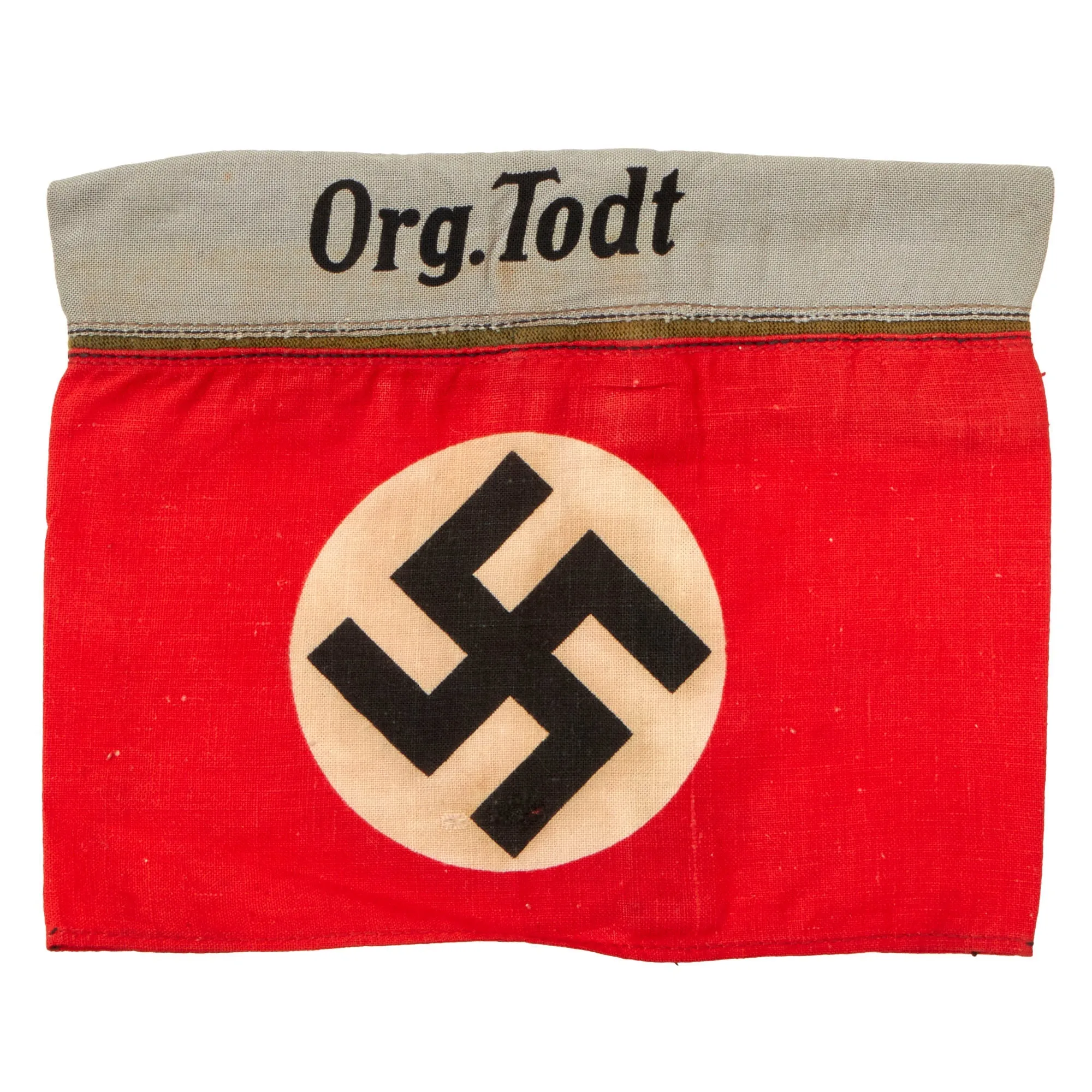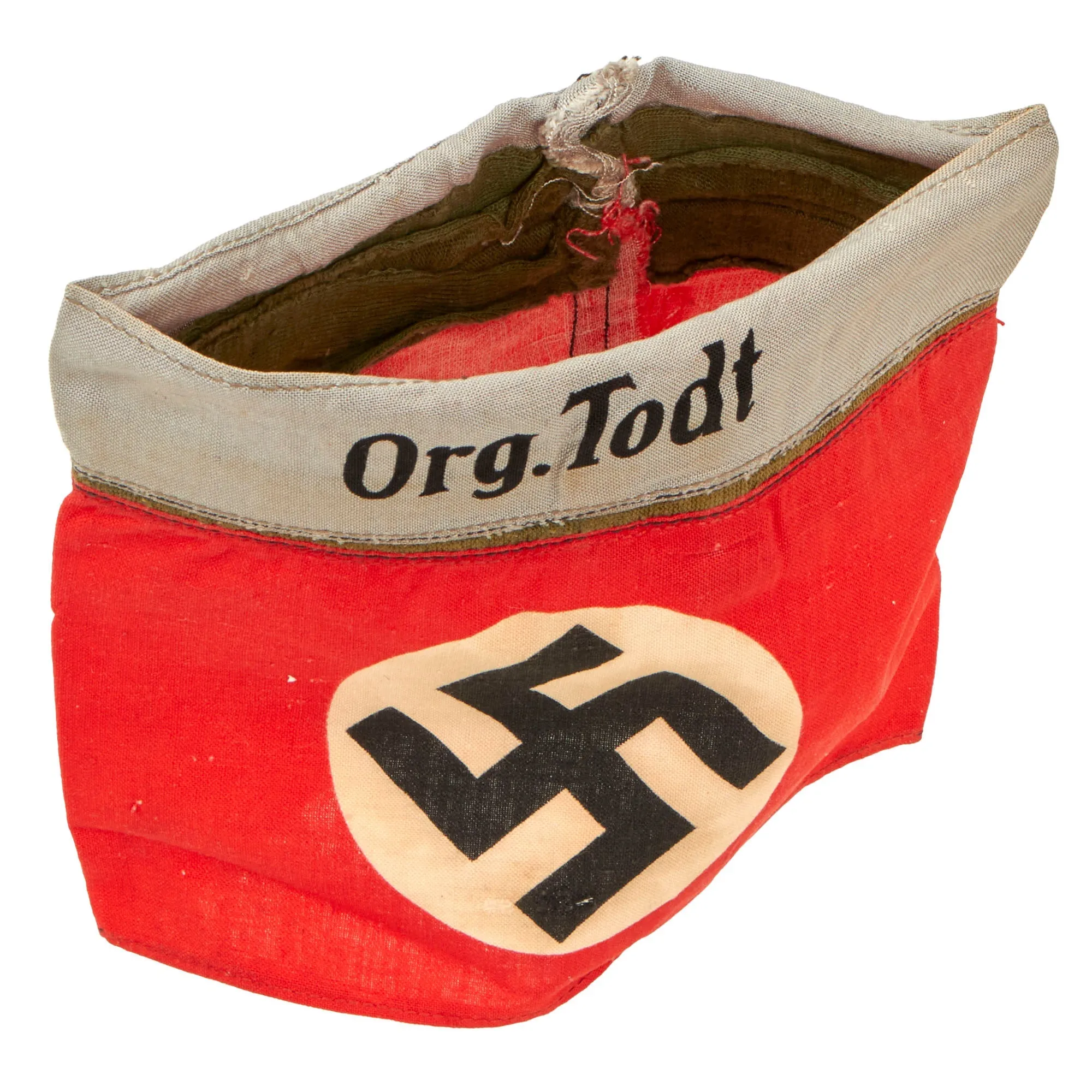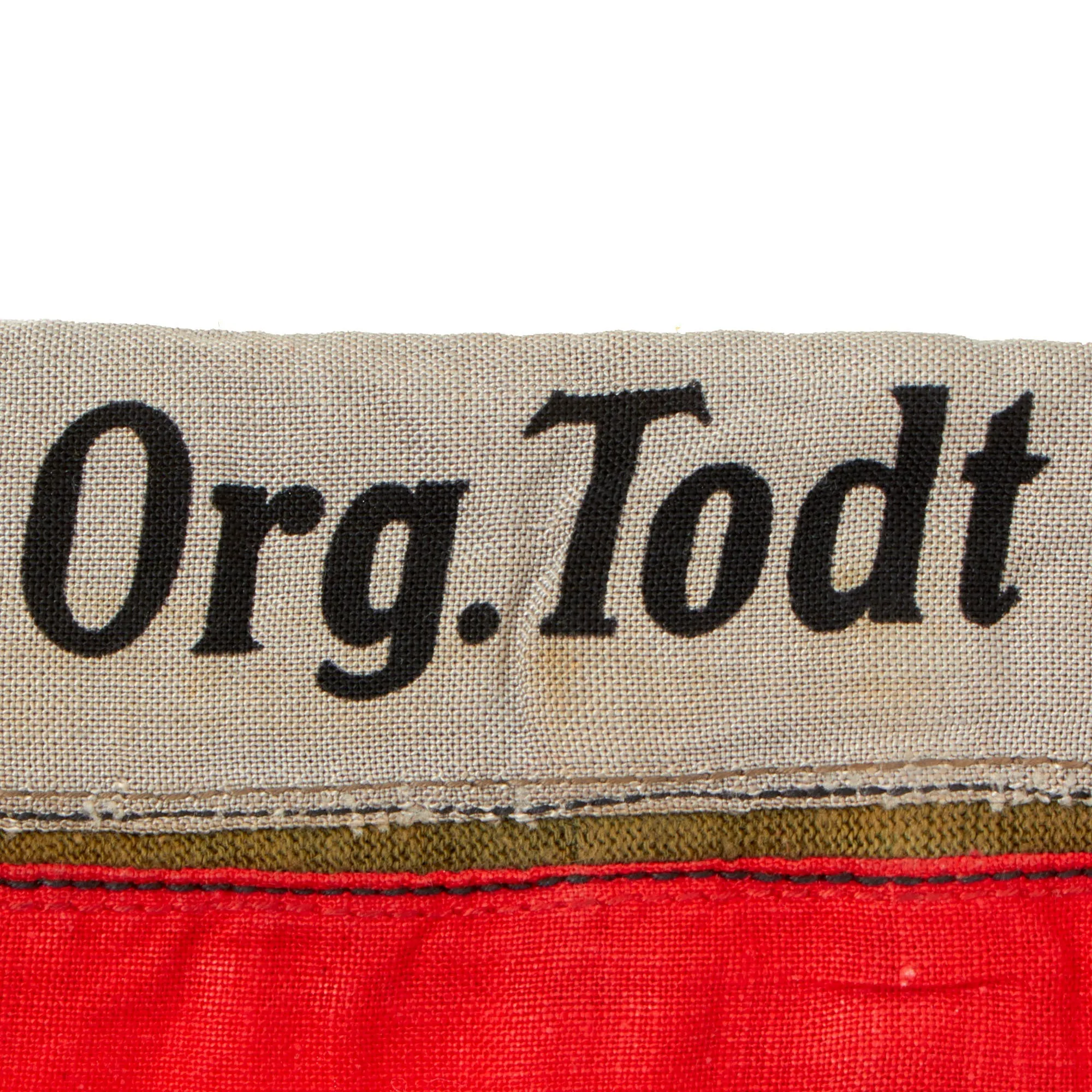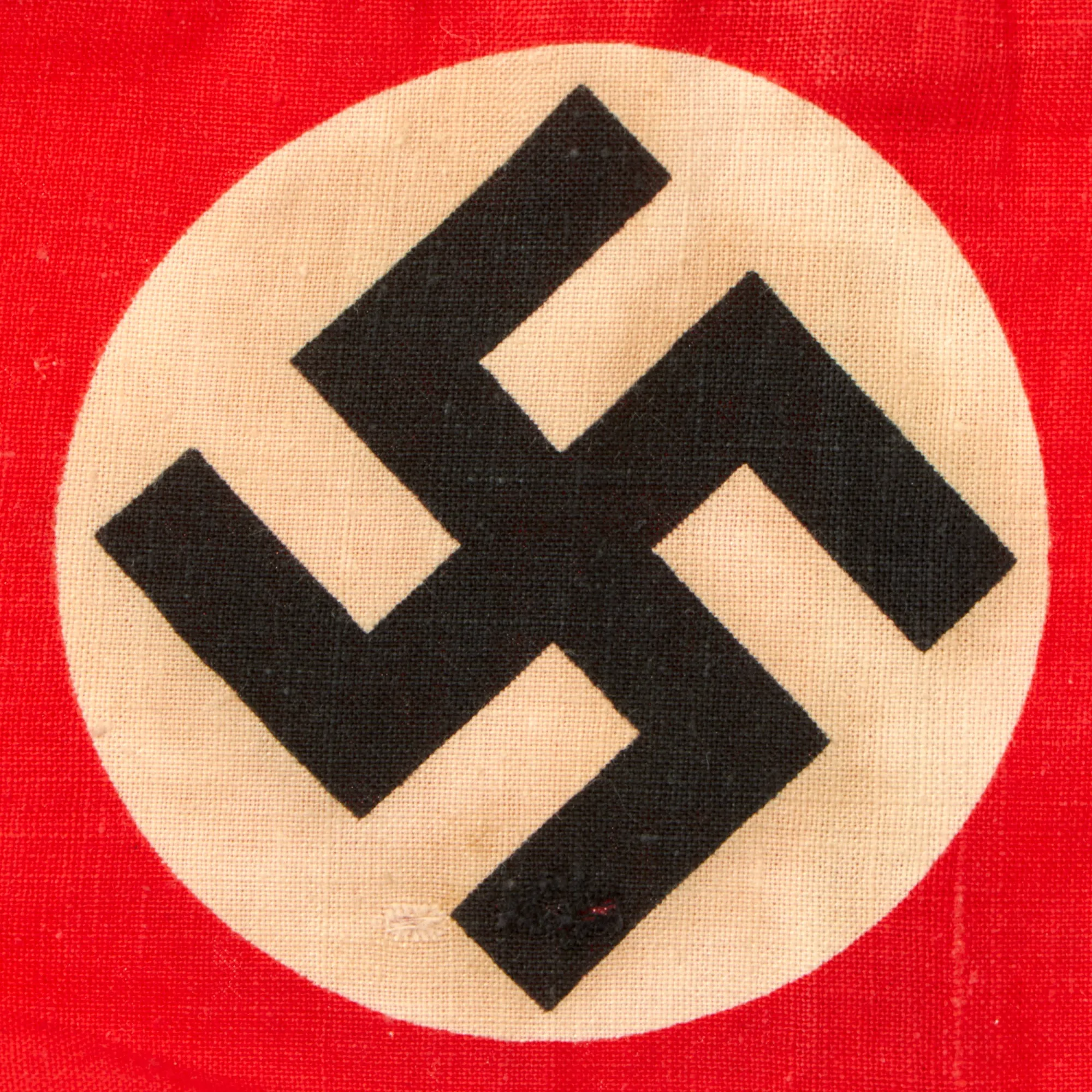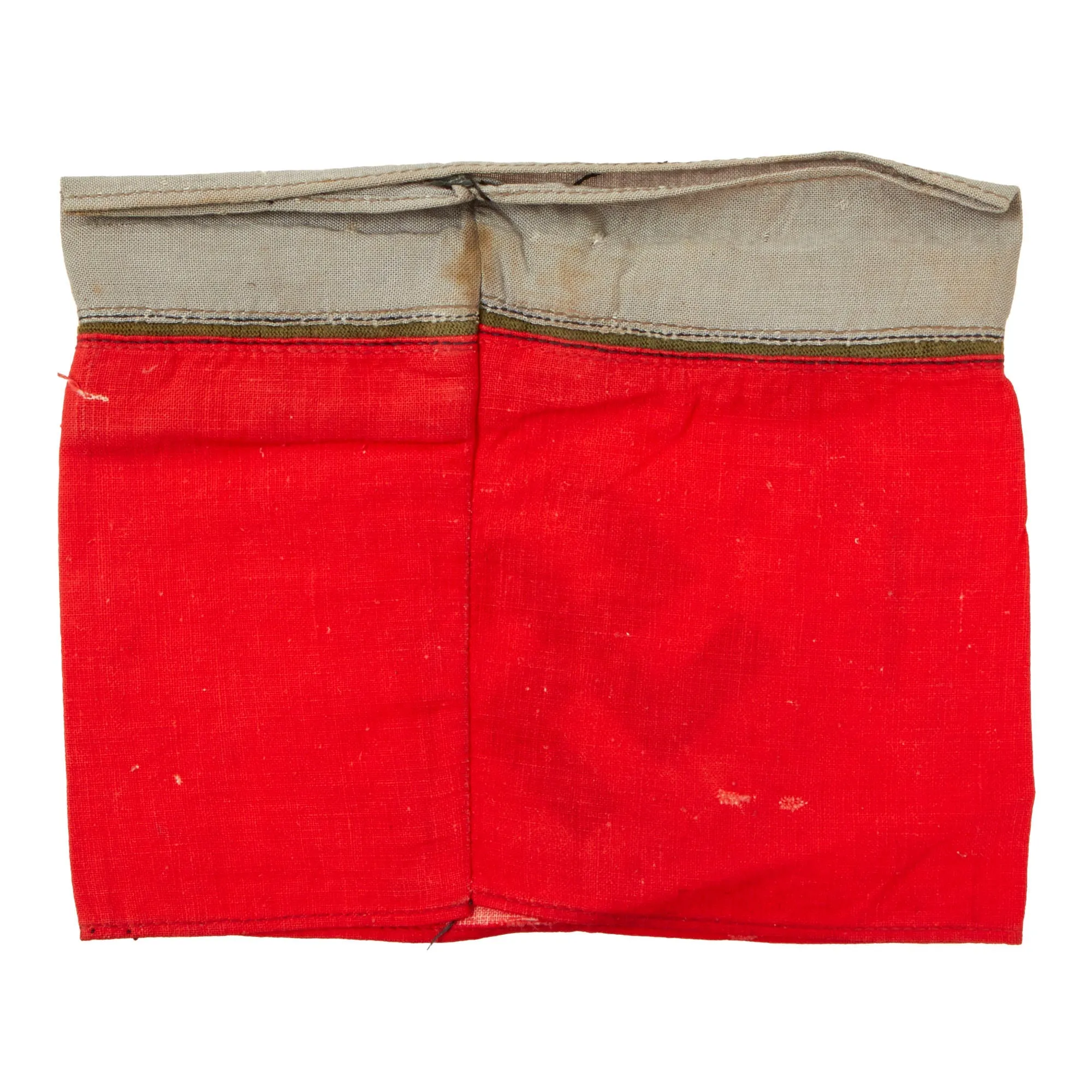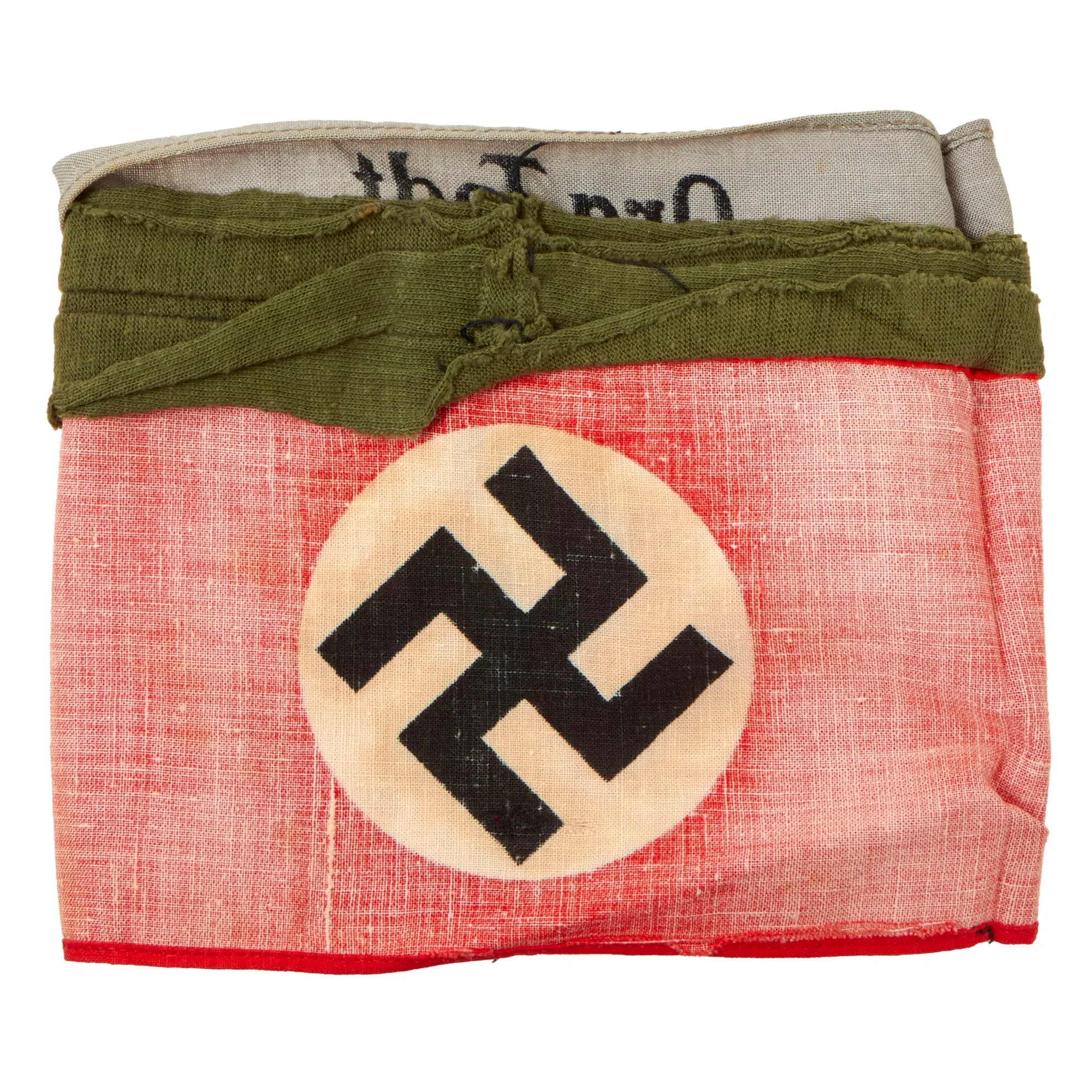Original Item: Only One Available. Nearly every military, civil, political and paramilitary organization in existence during the Third Reich used armbands. Armbands were worn on military and civilian uniforms and also on civilian clothes, from suit jackets to work clothing. They were used to denote membership in organizations, to indicate a specific role or function of the bearer, and as insignia of rank. Many organizations would change the design of their armbands over time, which added to the variety produced. These were manufactured in countless variations, ranging from simple printed bands to elaborately hand-embroidered pieces of the highest quality. Some NSDAP armbands were worn by all members of large organizations and were made by the millions. Others were intended for use at a specific time and place and were unique. Many types were made in very limited numbers. Some bore metal insignia or special identifiers that indicated the wearer’s rank, unit affiliation, or nationality. Armbands were sometimes but not always marked with ink stamps by the issuing authorities.
This Org Todt Armband is a great example of this hard to find and desirable armband. It’s a textbook wartime style for the Organisation Todt, that appears to have been worn on a uniform. The NSDAP armband is a printed type, made of a thin white fabric that has been printed red with a black swas inside a white circle. The dye used to print the armband is visible on the reverse, a typical trait of period printing. The top edge of the armband is adorned with a narrow gray Organisation Todt band that feels like rayon or a rayon cotton blend, and has Org. Todt printed on it in black.
The bands are fastened together using some olive fabric, and all are sewn together in the back. There are remnants of some hand stitches that may have been used to affix this armband to a uniform sleeve. It measures approximately 14" x 6", and is a bit stretchy so getting an accurate measurement is not easy.
This Org Todt Armband is complete and sound, with bright colors. It shows slight wear and age toning, with light patina, but no major damage. Overall, this scarce armband remains in great shape, and is the first example that we have ever had. Ready to add to your collection and display!
The Organisation Todt (OT) was a civil and military engineering organization in NSDAP Germany from 1933 to 1945, named for its founder, Fritz Todt, an engineer and senior NSDAP. The OT was not given an official name until AH did so soon after coming to power during 1933. During 1938 Todt initiated the Organisation Todt proper as a consortium of the administrative offices, which Todt had personally established in the course of the Autobahn project, private companies as subcontractors and the primary source of technical engineering expertise, and the Labour Service as the source of manpower. He was appointed by AH as plenipotentiary for labour for the second four-year plan, decreasing Göring's role. Investment in civil engineering work was reduced greatly. The organization was responsible for a huge range of engineering projects both in NSDAP Germany and in occupied territories from France to the Soviet Union during World War II. It became notorious for using forced labor.
From 1943 until 1945 during the late phase of the Third Reich, OT administered all constructions of prison camps to supply forced labor to industry. Fritz Todt's primary office was that of the General Inspector of German Roadways (Generalinspektor für das deutsche Straßenwesen) and his primary responsibility, the construction of the Autobahn network. He was able to draw on "conscripted" (i.e. compulsory) labour, from within Germany, through the Reich Labour Service (Reichsarbeitsdienst, RAD).
Fritz Todt died in an airplane crash on 8 February 1942, soon after a meeting with AH in East Prussia. Todt had become convinced that the war on the eastern front could not be won and thought himself independent enough to say as much to AH. As a result, there has been some speculation that Todt's death was a covert assassination, but this has never been substantiated.




